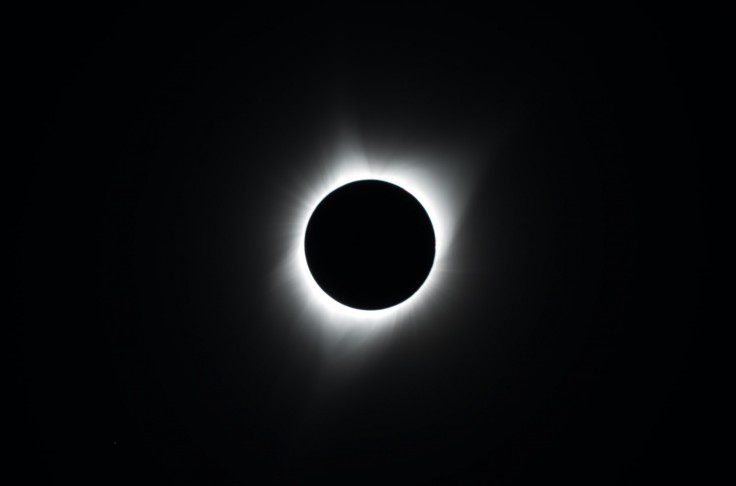
NASA snaps an eerie photo of the Moon's shadow over the Earth's North Pole during the June 10 annular eclipse using its EPIC camera.
The U.S. space agency used its Earth Polychromatic Imaging Camera (EPIC) on the National Oceanic Atmospheric Administration's Deep Space Climate Observatory Satellite (DSCOVR) to take the photo. It was part of a routine of taking a picture of the Earth, which so happened to be at the same time as the solar eclipse that was witnessed over the northern hemisphere last month.
NASA Photo: Moon Shadow Seems Like Odd Blurry Spot on North Pole
The shadow seemed like a strange, chilling blurry spot on the North Pole when EPIC snapped it from the Earth-Sun L1 Lagrange point--where DSCOVR is located about a million miles away from Earth. These snaps were taken "four times further than the Moon's orbit," NASA project scientist at DSCOVR Adam Szabo said in a Cnet report.
Here's a NASA Goddard video on the phenomenon.
EPIC, a 10-channel spectroradiometer, offers 10 narrow band spectral images of the sunlit face of the Earth using a 2048x2048 pixel Charge Coupled Device (CCD) detector attached to a 30-centimeter aperture Cassegrain telescope, NASA's EPIC website shared. DSCOVR gives EPIC a unique angular perspective of the Earth for use in scientific analyses of the ozone, aerosols, cloud reflectivity, cloud height, vegetation properties, and ultraviolet radiation estimates on our planet's surface.
Read also: Ring of Fire Eclipse 2021: Date, Time and How to Capture the Moment With Your Mobile Phone
Breathtaking Images of June 10 Annular Eclipse
The solar eclipse last June 10 drew a number of breathtaking images from the ground, as well as some from the air. The phenomenon happens when the Moon fully or partially blocks out the Sun, depending on the location of the observer.
This offers immense opportunities to take awesome snaps of the event--from seasoned and hobbyist photographers to the scientific community, including NASA's EPIC team. During the June 10 event, the distance between the Sun, Moon, and Earth did not warrant a total solar eclipse, but an annular eclipse that left a ring of the massive fireball visible, thus having it known as the "Ring of Fire" eclipse.
The eclipse was only seen from Ontario to Greenland, traversing through the North Pole and then pass through Siberia--areas that are inaccessible and uninhabited, Space.com noted. But that did not prevent photographers from putting up settlements in those areas just to take those impressive images of the event, such as one from Iqaluit, Nunavut, Canada.
the best I got for the Annular Eclipse from Iqaluit pic.twitter.com/Tm6l5UJ7nG
— Vinnie Karetak ❄quadruple vaxed 💉💉💉💉 (@arviamiut) June 10, 2021
Other regions in the northern hemisphere saw this phenomenon as a partial eclipse, with some stunning photos likewise taken, Cnet further reported. This phenomenon happens when the darkened disc of the Moon aligns between the Earth and the Sun, covering some or nearly all of it, depending on the time and location of the viewers.
A few others from the annular solar eclipse as the sun rose behind the Statue of Liberty in New York City, Thursday morning. #newyorkcity #nyc #newyork @NYmediaBoat #RingofFire #solareclipse2021 #solareclipse @agreatbigcity pic.twitter.com/SY4v63y36y
— Gary Hershorn (@GaryHershorn) June 10, 2021
Partial eclipse rising over DC this morning ☀️ #Eclipse2021 pic.twitter.com/QybxaVlUr2
— Andy Feliciotti 🔥 (@sup) June 10, 2021
The next eclipse in 2021 is more challenging to experience fully, since the path of the December 4 total solar eclipse will pass over Antarctica. But the next annular eclipse is set to happen across the western US and Central America on Oct. 14, 2023.









